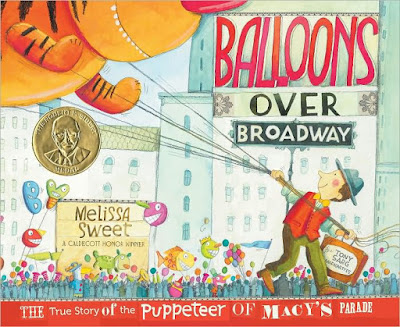Out of Wonder by Kwame Alexander, Chris Colderley, and Marjory Wentworth
illustrated by Ekua Holmes Coretta Scott King Award Poetry This collection of poems is dedicated and intended to celebrate the works of well known poets that have impacted the poets in some way. It is broken up into parts with different themes based on the dedication style. Each poet has multiple poems in this collection and as you read, you begin to be able to identify who the poet is before knowing. I think this collection would be better suited for older students who have been introduced to the poets that are written about. This will allow the students to full appreciate the poetry written here. I would definitely use this if I ever taught an upper elementary or middle school English class. It could be incorporated into poetry units as a study itself or to go along with poems by the particular poets that Out of Wonder is dedicated to. I also really enjoyed all the illustrations and thought they added a brightness to the overall collection.


